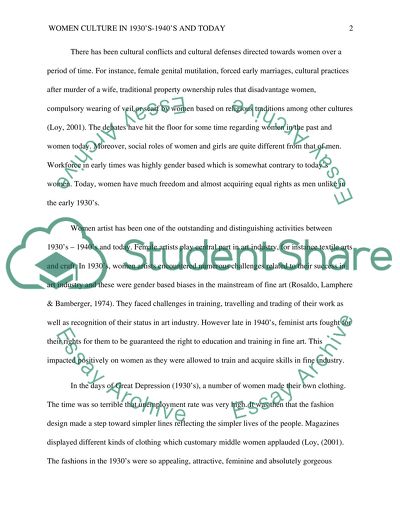Cite this document
(“Women in Culture in the 1930's-1940's VS Women in Culture Today Research Paper”, n.d.)
Retrieved de https://studentshare.org/gender-sexual-studies/1497469-women-in-culture-in-the
Retrieved de https://studentshare.org/gender-sexual-studies/1497469-women-in-culture-in-the
(Women in Culture in the 1930's-1940'S VS Women in Culture Today Research Paper)
https://studentshare.org/gender-sexual-studies/1497469-women-in-culture-in-the.
https://studentshare.org/gender-sexual-studies/1497469-women-in-culture-in-the.
“Women in Culture in the 1930's-1940'S VS Women in Culture Today Research Paper”, n.d. https://studentshare.org/gender-sexual-studies/1497469-women-in-culture-in-the.


